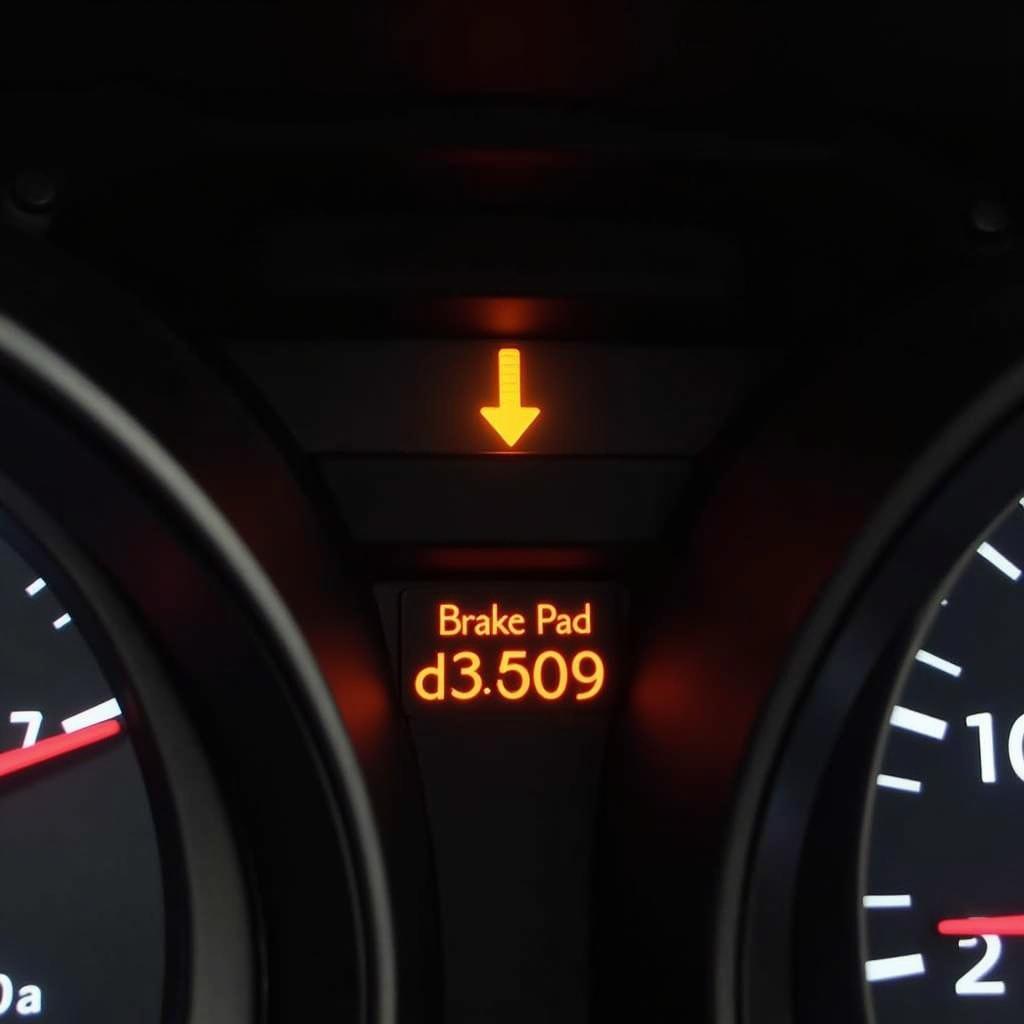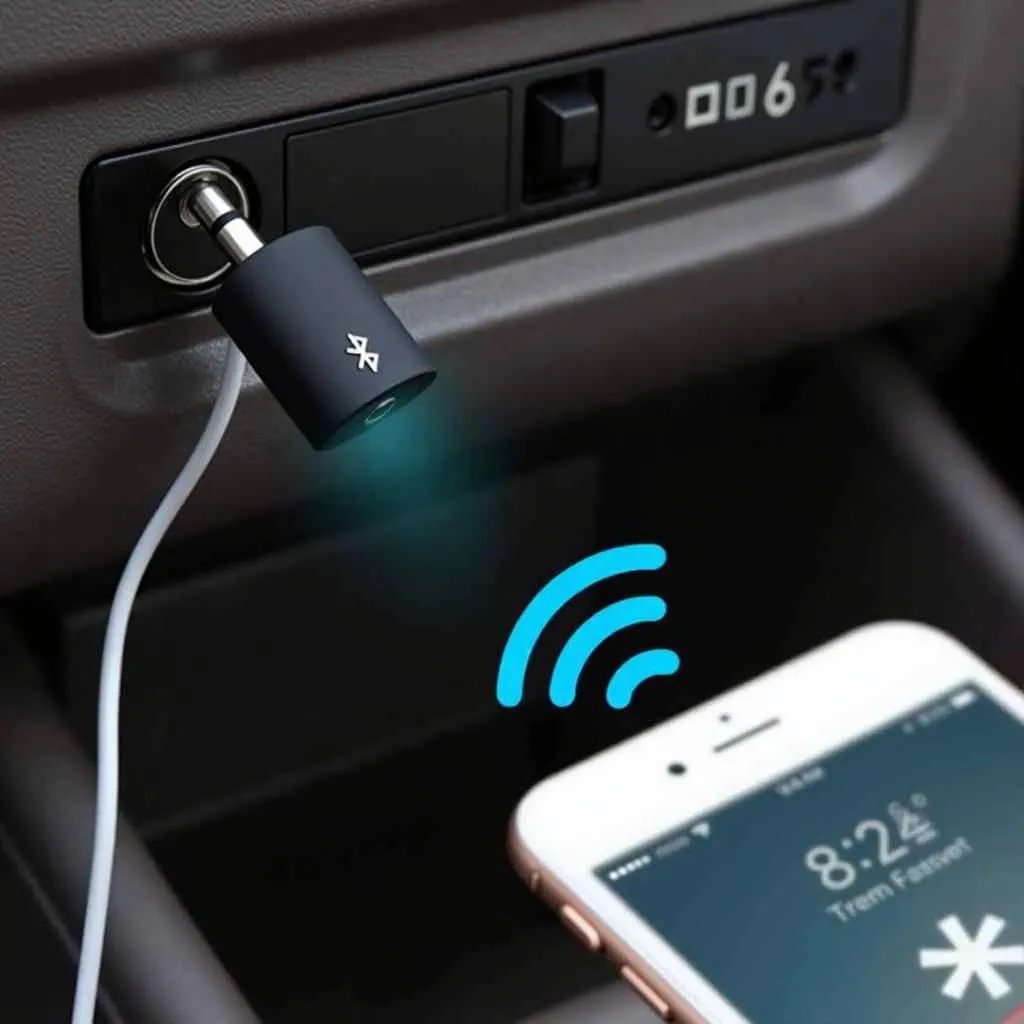The brake pad warning light on your Land Rover Discovery 4 is your first line of defense against worn-out brake pads. Ignoring it can lead to costly repairs and compromised safety. This guide will walk you through understanding the warning light, resetting it, and when professional help is necessary.
Understanding the Brake Pad Warning Light
The brake pad warning light on your Discovery 4 usually illuminates as a yellow or amber symbol on the dashboard. This light is triggered by a sensor embedded within the brake pad itself, indicating that the pad has worn down to a predetermined level.
What triggers the warning light?
- Worn Brake Pads: The most common culprit. As you use your brakes, the friction material on the pads wears down. When the material reaches a certain minimum thickness, the sensor makes contact, completing a circuit, and illuminating the warning light.
- Faulty Sensor: While less common, the sensor itself can malfunction. This could be due to damage to the sensor wire or a faulty connection.
- Low Brake Fluid: Although it has its own warning light, critically low brake fluid can sometimes trigger the brake pad warning light. This is because insufficient brake fluid can affect the hydraulic pressure needed to engage the brakes properly.
 Land Rover Discovery 4 Brake Pad Warning Light
Land Rover Discovery 4 Brake Pad Warning Light
Resetting the Brake Pad Warning Light on a Land Rover Discovery 4
Important: Before attempting to reset the light, it’s crucial to ensure that you’ve addressed the root cause of the warning. If you simply reset the light without replacing worn brake pads or fixing a faulty sensor, you’re putting yourself and others at risk.
Here are the general steps to reset the brake pad warning light on most Discovery 4 models:
- Replace the brake pads (if necessary). This is the most important step. If the warning light is due to worn pads, replacing them is non-negotiable.
- Turn the ignition to the “on” position without starting the engine.
- Press and hold the brake pedal down firmly.
- While holding the brake pedal, turn the steering wheel all the way to the left, then all the way to the right, and back to the center. You might hear a clicking sound, which is normal.
- Release the brake pedal. The warning light should now be off.
Important Notes:
- This method might not work for all Discovery 4 model years. Refer to your owner’s manual for the most accurate instructions for your specific vehicle.
- If the warning light remains on after attempting the reset, it’s essential to have your vehicle diagnosed by a qualified mechanic. There may be a more complex issue that needs attention.
When to Seek Professional Help
While a DIY brake pad replacement and warning light reset might seem tempting, certain situations call for professional expertise:
- You’re not comfortable working on your vehicle. Brake systems are critical safety components. It’s always best to err on the side of caution and leave the job to the professionals if you’re unsure.
- The brake pad warning light comes on again shortly after a reset. This could indicate a more serious problem, such as a faulty sensor or a deeper issue with the braking system.
- You notice any unusual noises or sensations when braking. This could be a sign of a more significant issue, such as warped rotors or a problem with the brake calipers.
red brake warning light on a 2008 f 150
Preventative Maintenance is Key
The best way to avoid dealing with a brake pad warning light is through preventative maintenance. Regularly inspect your brake pads for wear, and have them replaced before they reach the point of triggering the warning light.
Here are some tips for extending the life of your brake pads:
- Avoid hard braking: Sudden, hard braking puts excessive wear and tear on your brake pads. Anticipate stops and coast to a stop whenever possible.
- Drive smoothly: Smooth acceleration and deceleration will help your brake pads last longer.
- Lighten your load: Carrying heavy loads in your Discovery 4 puts extra strain on the braking system, leading to faster brake pad wear.
Remember, a well-maintained Land Rover Discovery 4 is a safe and reliable vehicle. Pay attention to the warning signs, address issues promptly, and enjoy many miles of trouble-free driving.


